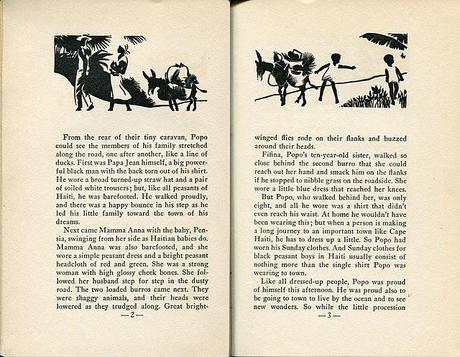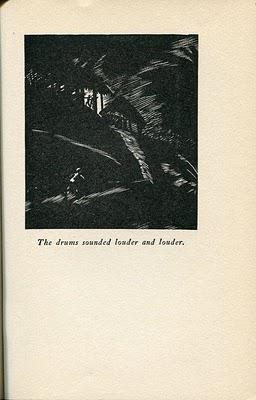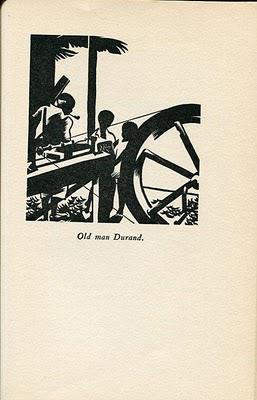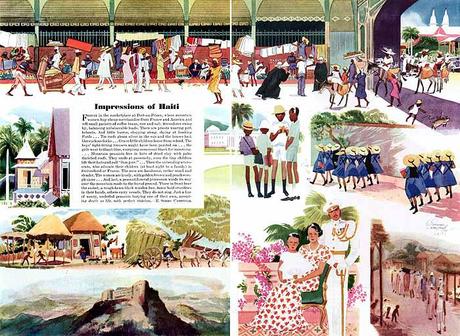 At twenty-two, Hughes was already an acclaimed poet in the black community for his poems in The Crisis, the official magazine of the National Association for the Advancement of Colored People (NAACP). Bontemps had had poems published in The Crisis just that year. The two men looked so much alike that they were often mistaken for one another. (A quick look at their photographs on Wikipedia--Hughes, Bontemps--shows that clearly.) And when they met they had an instant affinity to each other. Hughes left Harlem for Washington D.C. days after they met, but Bontemps came and visited him in D.C., as Hughes would later visit Bontemps in the early thirties in Huntsville, Alabama where Bontemps had a teaching position at a college there. They corresponded frequently, a correspondence that would eventually reach over 2,500 letters by the time of Hughes's death.
At twenty-two, Hughes was already an acclaimed poet in the black community for his poems in The Crisis, the official magazine of the National Association for the Advancement of Colored People (NAACP). Bontemps had had poems published in The Crisis just that year. The two men looked so much alike that they were often mistaken for one another. (A quick look at their photographs on Wikipedia--Hughes, Bontemps--shows that clearly.) And when they met they had an instant affinity to each other. Hughes left Harlem for Washington D.C. days after they met, but Bontemps came and visited him in D.C., as Hughes would later visit Bontemps in the early thirties in Huntsville, Alabama where Bontemps had a teaching position at a college there. They corresponded frequently, a correspondence that would eventually reach over 2,500 letters by the time of Hughes's death.It was at that Alabama visit in 1931 that Hughes and Bontemps initiated their first collaboration and the only one to be published in their lifetimes, a children's novel, Popo and Fifina: Children of Haiti. By then, Hughes had published three books of poetry and a book of fiction, and Bontemps had published a novel, but neither of them had yet written for children.
POPO AND FIFINA IS IN MANY WAYS A TRAVEL BOOK IN NOVEL FORM. The New York Times called it just that, and it has a lot in common with Hughes's later children's book The First Book of the West Indies (to be discussed in a future post). The story follows a brother and a sister (with more focus on the brother) as they move with their family from a small inland village to the larger town of Cape Haiti.

When they arrive in town, we are treated to a child's view of Cape Haiti. There are so many people! Men with parrots on their shoulders. Women with baskets on their heads. Children hawking candy. And the ocean! So much water.
Popo and Fifina's mother sets about making their new home while their father secures a position as a fisherman on one of the many fishing boats that go out each day. The children do their best to be helpful in any way they can, Fifina assisting her mother in making beds on the floor while Popo finds kindling for their fire.
Each detail is meant to expose an American audience to the dusty existence that is Haiti. Popo lives naked. A penny for candy is too much. The women wash with reeds, soap too expensive. The children must work. Even with these details of poverty, the family is never depicted as anything but happy, their lives full.
 In order for Hughes and Bontemps to show village life as well as town life, after several weeks the children return to their home village with their mother. There, life is a large family, the taste of mangoes fresh off trees, and the nighttime ritual of drums.
In order for Hughes and Bontemps to show village life as well as town life, after several weeks the children return to their home village with their mother. There, life is a large family, the taste of mangoes fresh off trees, and the nighttime ritual of drums.Back in Cape Haiti, Popo's parents announce that it is time for the eight-year-old to get a job. He is fortunate enough to be granted an apprentice position in an uncle's woodworking business. Popo devotes himself to the craft, working with diligence and without pause on the first job given him, the carving of a tray, which he decorates with a sailboat, a promising show at a career.
 Still the children's lives are not all work. Their father builds them a kite, which they fly on the beach. And the book ends with a family trip out to a lighthouse that is a joyous release even as it begins to rain.
Still the children's lives are not all work. Their father builds them a kite, which they fly on the beach. And the book ends with a family trip out to a lighthouse that is a joyous release even as it begins to rain.LANGSTON HUGHES HAD LIVED IN HAITI for three months in the middle of 1931, where he made an effort to befriend members of all classes, taking copious notes and gaining access to aspects of Haitian culture usually closed to foreigners (such as the drum ritual depicted in the novel). He had come back outraged at the nation's poverty, and especially by the existence of an American marine base of questionable legality. (The treaty that allowed the marines occupation was never ratified by Congress.) Despite this impression, Hughes and Bontemps managed to quell their left leaning politics to make an endearing children's book, which was both a critical and commercial success, staying in print for over twenty years.
PERHAPS THE MOST ARRESTING FEATURE of Popo and Fifina are the spectacular woodblock prints made by E. Simms Campbell. Campbell was the first African-American artist to get work from a national magazine--Esquire where he designed their mascot--and the first African-American to have a nationally syndicated comic strip. Tomorrow, I will post excerpts from an Arna Bontemps essay on Campbell from We Have Tomorrow, a book on prominent African-Americans, as well as other examples of Campbell's work. Here, however, I want to include by way of comparison an image from Campbell's own Impressions of Haiti in a 1936 issue of Esquire.

To see all of E. Simms Campbell's illustrations for Popo and Fifina, see my Flickr set here.
Background material on Langston Hughes and Arna Bontemps comes from Volume One of Arnold Rampersad's definitive biography The Life of Langston Hughes, and from Rampersad's introduction and afterward to a 1993 Oxford University Press edition of Popo and Fifina, which is now also out of print.
Tomorrow: E. Simms Campbell.
UPDATE: A friend informs me that Oxford University Press currently has a paperback edition of Popo and Fifina in print and available on Amazon. I encourage everyone to buy a copy.
All images are copyrighted © and owned by their respective holders.

